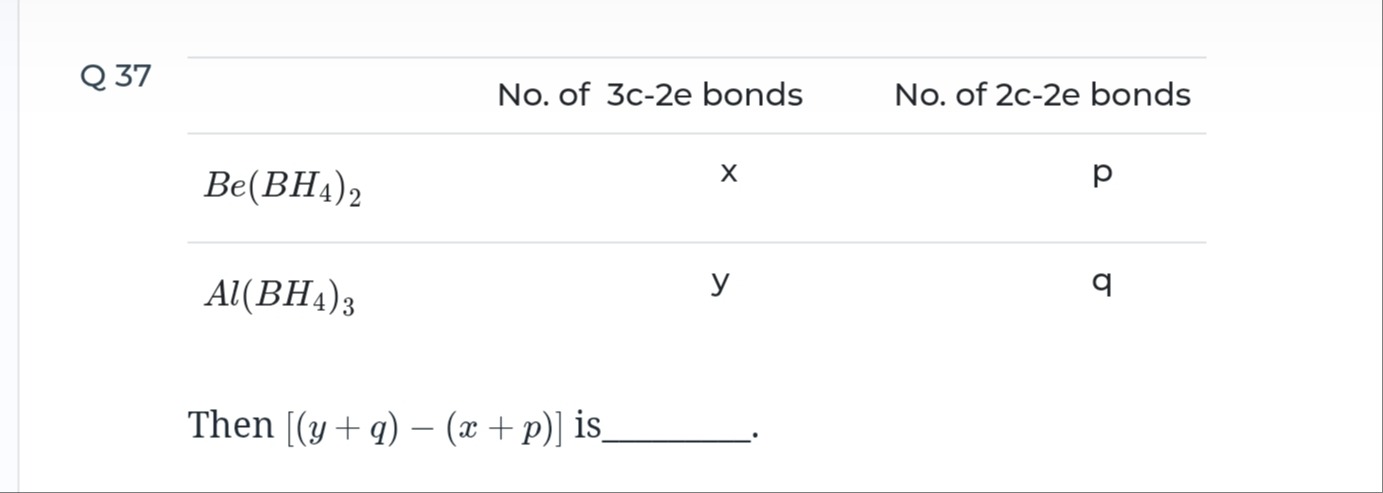Question
Question: Q 37 | | No. of 3c-2e bonds | No. of 2c-2e bonds | | -------------------- | --...
Q 37
| No. of 3c-2e bonds | No. of 2c-2e bonds | |
|---|---|---|
| Be(BH4)2 | x | p |
| Al(BH4)3 | y | q |
Then [(y+q)–(x+p)] is ______.

A
4
B
8
C
12
D
2
Answer
4
Explanation
Solution
In metal borohydrides, the borohydride ion (BH4−) typically coordinates to the metal center through bridging hydrogen atoms. The most common coordination mode for BH4− ligands in compounds like Be(BH4)2 and Al(BH4)3 is bidentate bridging, where two hydrogen atoms from each BH4 group bridge to the metal center.
-
For Be(BH4)2:
- There are two BH4 ligands.
- Each BH4 ligand acts as a bidentate bridging ligand, meaning it forms two B-H-Be bridges.
- Each B-H-Be bridge is a 3c-2e bond. Thus, each BH4 unit contributes 2 such bonds.
- Total number of 3c-2e bonds in Be(BH4)2 is x=2 ligands×2 bonds/ligand=4.
- In each BH4 unit, there are a total of 4 B-H bonds. If 2 are bridging (3c-2e), the remaining 4−2=2 are terminal B-H bonds.
- Each terminal B-H bond is a 2c-2e bond.
- Total number of 2c-2e bonds in Be(BH4)2 is p=2 ligands×2 bonds/ligand=4.
-
For Al(BH4)3:
- There are three BH4 ligands.
- Each BH4 ligand acts as a bidentate bridging ligand, forming two B-H-Al bridges.
- Each B-H-Al bridge is a 3c-2e bond. Thus, each BH4 unit contributes 2 such bonds.
- Total number of 3c-2e bonds in Al(BH4)3 is y=3 ligands×2 bonds/ligand=6.
- The remaining 4−2=2 B-H bonds in each BH4 unit are terminal 2c-2e bonds.
- Total number of 2c-2e bonds in Al(BH4)3 is q=3 ligands×2 bonds/ligand=6.
Now, we need to calculate [(y+q)–(x+p)]:
- y+q=6+6=12 (Total number of B-H bonds in Al(BH4)3)
- x+p=4+4=8 (Total number of B-H bonds in Be(BH4)2)
Therefore, [(y+q)–(x+p)]=12−8=4.
Alternatively, we can note that x+p is the total number of B-H bonds in Be(BH4)2 (2×4=8) and y+q is the total number of B-H bonds in Al(BH4)3 (3×4=12). The difference is 12−8=4.
